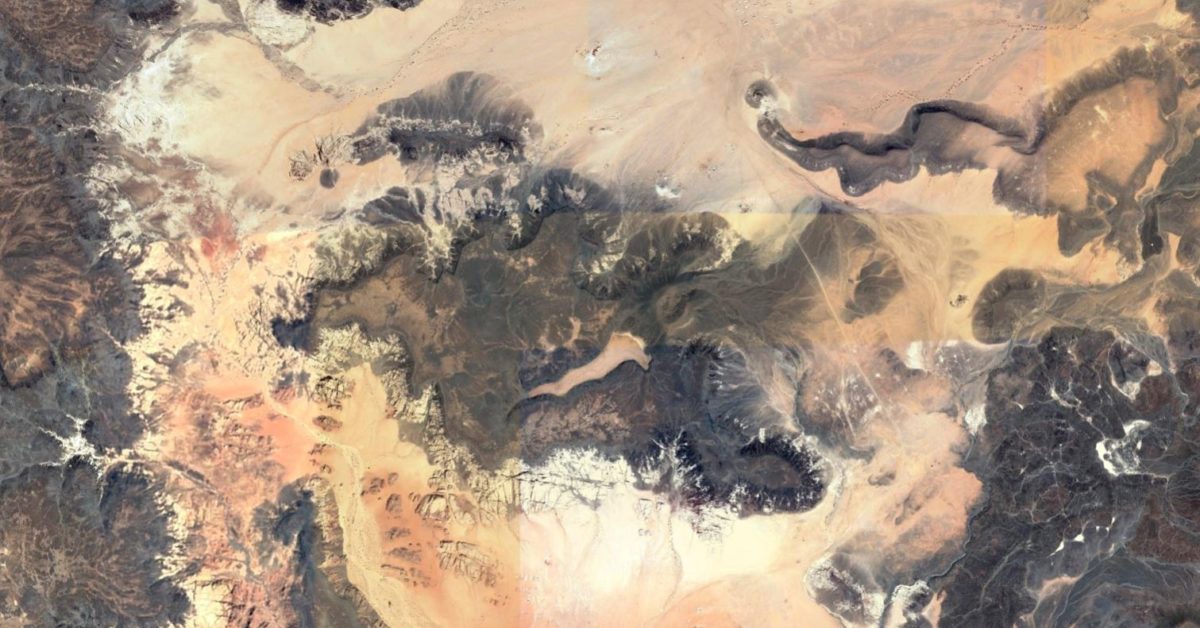Hala-'l Badr, Saudi Arabia

Among proponents of the theory that Mount Sinai must be in Saudi Arabia, some have suggested that the Hala-'l Badr volcanic mountain is the best candidate. This candidacy is largely based on an assumption that the phenomenon described in the Exodus story must be the result of volcanic activity in the immediate vicinity.
Supporters of this theory believe that Mount Sinai must be in ancient Midian and, more specifically, northwestern Saudi Arabia and southern Jordan. The Hala-'l Badr candidacy is based on the assumption that the "devouring fire" described in the Exodus story is a description of a volcanic eruption, thus requiring Mount Sinai to be a volcano. They also suggest that the Israelites equated Yahweh with the god of the volcano, and so their version of God is a slightly evolved version of ancient, polytheistic religious beliefs.
The theory was first proposed by a German scholar of the Old Testament named Hermann Gunkel who lived from 1862 to 1932. He first advocated for Hala-‘l Badr as Mount Sinai in his book, Genesis, published in 1901.
In his book Genesis, Gunkel wrote:
The characteristic Israelite narratives of Yahweh's appearance in the burning thorn bush (Exod. 3:2), in the burning and smoking Sinai (Exod. 19:9, 20:18; Deut. 4:11), and especially in the pillars of smoke and fire (Exod. 13:21)…can be explained originally from the fact that, in Israel’s earliest belief, Yahweh was the god of the Sinai volcano.
Hermann Gunkel, Genesis (trans. M.E. Biddle; Macon, GA: Mercer University Press, 1997), 181.
Criticisms
The biggest difficulty with this candidate and the overall theory that Mount Sinai must be a volcano it requires the Exodus story to be exaggerated, inaccurate and/or to be missing important details. This theory is therefore discarded by those looking for a literal match with the criteria so that it does not contradict the text.
The destructiveness of a volcanic eruption would have killed Moses if he was on the mountain when it occurred, as well as likely destroyed the Israelite encampment in front of the mountain. The Exodus story does not describe the phenomenon as causing massive casualties, forcing the Israelites to flee away or destroying the area where they settled. It is also probable that the brook that is described as coming down from Mount Sinai would have been contaminated and no longer usable for the population.
When the Doubting Thomas Research Foundation reached out to Sir Colin Humphreys, Professor at the University of Cambridge, and author of The Miracles of Exodus: A Scientist's Discovery of the Extraordinary Natural Causes of the Biblical Stories for comment on his theory, including the concern about a volcanic eruption potentially killing Moses and the Israelites, he responded by saying:
If you look at the satellite images of Bedr on Google Earth you will see that the lava flow was down one side of the mountain, and then down one side of the table mountain, Tadra, upon which Bedr stood. So it would have been perfectly possible for the Israelites to have stood on the other side in safety while Bedr was erupting.
Dr. Humphreys' explanation appears to make sense on its face. However, the ancient Hebrew text does not support a volcanic hypothesis. Rabbi Alexander Hool, in his book Searching for Sinai: The Location of Revelation, notes that a straightforward translation of the terms describing Mount Sinai shows that God's presence descended on the mountain from above, and did not emanate from a volcanic eruption below.
Supporters
The most well-known advocate of the candidacy of Hala-'l Badr Saudi Arabia is Hermann Gunkel.
Sir Colin Humphreys, Professor at the University of Cambridge
Charles Beke
Sigmund Freud
Immanuel Velikovsky
Eduard Meyer
Martin Noth.
Alois Musil author of The Northern Hegaz: A Topographical Index.
Last updated July 31, 2019.
